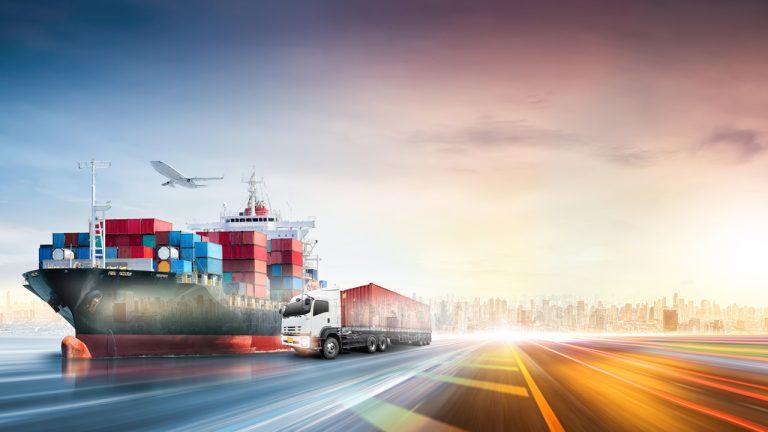
Battery metal cobalt has been in focus in recent years for its role in lithium-ion batteries, bringing attention to the top cobalt producing countries.
One of the metal’s main catalysts is the electric vehicle roll out. The lithium-ion batteries that power electric vehicles and energy storage require lithium, graphite and cobalt, among other raw materials, and demand for these important commodities is expected to keep rising as the shift toward clean technologies continues at a global scale.
Additionally, the metal is predominantly produced as a by-product of copper and nickel, two other metals that are important for the green transition.
However, supply growth in many of the battery metals has out scaled near-term demand, leading to a price pullback over the last two years. The cobalt market has trended downwards in 2024, with prices falling 10 percent from July to September.
As Roman Aubry, cobalt pricing analyst at Benchmark Mineral Intelligence, pointed out, Q3 cobalt values across all grades tracked by Benchmark Mineral Intelligence hit record lows unseen since 2017. The retraction was driven by prolonged weak demand and mounting surplus supply.
Investors interested in the sector should learn the top cobalt producers by country. According to the US Geological Survey, world production has increased significantly over the past two years. In 2023 total cobalt output topped 230,000 metric tons (MT), a large increase from 2022’s 190,000 MT, and a big jump from 2021's 165,000 MT.
Read on for a closer look at cobalt supply and which countries lead in production.
1. Democratic Republic of Congo
Mine production: 170,000 metric tons
The Democratic Republic of Congo (DRC) is by far the world’s largest producer of cobalt, with 170,000 metric tons of production in 2023, accounting for roughly 73 percent of global production. The country has been the top producer of the metal for some time, and is likely to remain crucial to the cobalt market for the foreseeable future.
However, cobalt mining in the DRC is associated with rampant human rights abuses and child labor, due in part to the large presence of unregulated artisanal mining. Attempts have been made to regulate the DRC's artisanal mining sector. But with hundreds of thousands of people relying on artisanal mining for income, eliminating it completely isn't possible.
Efforts to date include the creation of a new state company, Entreprise Générale du Cobalt, to buy and market all artisanal cobalt mined in the DRC; it was set up in 2019 and struggled to make progress. However, in February 2024, it signed an agreement with state miner Gecamines for exclusive mining rights to five mining areas.
Aside from that, the Responsible Minerals Initiative, in cooperation with the Global Battery Alliance, has drafted a framework for a regulated artisanal mining sector. The DRC's mines minister formally approved the ASM Cobalt Standard in 2022, and plans for assessing its effectiveness at pilot sites are being developed.
Outside the DRC's artisanal mining sphere, cobalt is largely produced as a by-product of copper mines, including the Tenke Fungurume mine, owned by the CMOC Group (OTC Pink:CMCLF,HKEX:3993); Metalkol RTR, owned by Eurasian Resources Group and the KOV; and the Mutanda and Mashamba East mines, owned by Glencore (LSE:GLEN,OTC Pink:GLCNF). While the CMOC Group has ramped up cobalt production at Tenke Fungurume, Glencore has dialed back its production.
2. Indonesia
Mine production: 17,000 metric tons
Indonesia has ramped up production to become the second largest producer of the EV metal, with 17,000 metric tons of cobalt in 2023 compared to only 2,700 MT of cobalt in 2021. This rapid change was the result of an increase in investment in Indonesia's battery metals supply chain, predominantly from Chinese companies, which moved in after Indonesia banned nickel ore exports in 2019. The country's higher cobalt production has come from four new high-pressure acid leaching (HPAL) facilities that process ore to produce both nickel and cobalt in mixed hydroxide precipitate, which can then be exported.
The first two HPAL operations came online in 2021 as part of the existing Indonesia Morowali Industrial Park. The facilities were developed by QMB New Materials, a joint venture between Tsingshan Holding Group, GEM (SZSE:002340), CATL (SZSE:300750) and Hanwa (TSE:8078). As of late 2023, two others are also operating in the country — one run by Huayue, owned by Tsingshan and CMOC Group, and one run by Halmahera Persada Lygend, owned by Lygend Resources (HKEX:2245) and Trimegah Bangun Persada (IDX:NCKL).
In mid-2024, partners Eramet (EPA:ERA) and chemical producer BASF (OTCQX:BFFAF,FWB:BASF) decided against executing the planned US$2.6 billion Sonic Bay nickel-cobalt hydrometallurgical complex due to nickel market dynamics, including low prices and oversupply. Sonic Bay would have processed ore from the Weda Bay nickel mine to produce 7,500 MT of cobalt and 67,000 MT of nickel per year.
According to a market report released in May 2023 from the Cobalt Institute, Indonesia has the potential to increase its cobalt output 10 fold by 2030. In the same vein, data from Benchmark Mineral Intelligence indicates that Indonesia's 2030 cobalt output will make up 20 percent of global production compared to 1 percent in 2021 and 5 percent in 2022.
While the market has been searching for an alternative to the DRC for its cobalt, both Indonesia's nickel industry and this rapid build out come with their own environmental concerns.
3. Russia
Mine production: 8,800 metric tons
After rising in 2022, Russia’s cobalt production declined in 2023, falling from 9,200 metric tons to 8,800 metric tons. While the country's cobalt reserves stand at 250,000 MT, Russia is still well behind the DRC in terms of production. Large Russian miner Norilsk Nickel produces cobalt and is among the world’s top five producers of the mineral.
With concerns about DRC cobalt running high, some automakers have been calling for increased electric vehicle battery production in Europe. There was hope that this push could boost Russia's future cobalt production — however, that may now be out of the question while the country wages war against Ukraine.
In April 2022, the US hit Russian cobalt with a 45 percent duty that was set to expire on January 1, 2024. The sanctions on Russian and Belarusian cobalt were extended in June 2024, and in September the US imposed a 25 percent tariff on Chinese cobalt.
4. Australia
Mine production: 4,600 metric tons
As the DRC becomes increasingly challenging for miners and as investors try to divert their interests away from Africa, Australia is another country that’s receiving more attention — the island nation's cobalt reserves are the second largest in the world at 1,700,000 MT.
Despite holding a large amount in reserves, Australian cobalt production contracted year-over-year from 2022 to 2023. After output spiked to 5,900 metric tons in 2022, cobalt production declined to 4,600 metric tons in 2023.
As is the case for many other countries on this list, cobalt is produced in Australia as a by-product of copper and nickel mining. The country’s nickel mines are located in the western part of the country, mostly around the Kalgoorlie and Leonora regions.
Additionally, the Australian government has been sending geologists to search for cobalt in mine waste, an effort that bore fruit when Queensland geologist Anita Parbhakar-Fox tested a copper mine waste sample that graded 7,000 parts per million cobalt.
The CEO of Australian company Cobalt Blue Holdings (ASX:COB,OTC Pink:CBBHF) described the discovery as a game changer to the Financial Times, estimating there could be up to 300,000 MT of cobalt in Australian mine waste.
Another important cobalt project in the country under Cobalt Blue is the Broken Hill project, which will allow for cobalt production on-site, rather than extracted as a by-product of nickel.
Broken Hill is planned to begin production in 2026, and is anticipated to have an output of around 4,000 metric tons of cobalt annually over a 20 year mine lifespan.
5. Madagascar
Mine production: 4,000 metric tons
Madagascar’s cobalt-mining industry produced 4,000 metric tons in 2023, up significantly from the 3,500 MT in 2022rebounded through 2021, putting out 3,500 MT in 2022, and 4,000 MT in 2023.
Much of the country’s cobalt production comes from the Ambatovy nickel-cobalt mine, owned through a joint venture by Japanese company Sumitomo (TSE:8053) and a Korean state-owned entity. The mine has faced production and profitability issues.
In August 2024, the companies submitted a debt restructuring plan to a London court. According to media reports, Sumitomo, the project's major shareholder, has accumulated 410 billion yen in losses stemming from the project, including a 265.5 billion yen total impairment loss.
Most recently, in October, a pipeline moving ore from the mine to a processing and refining plant had to be shut down due to damage. While production began slowly ramping up at the end of the month, Ambatovy's future remains uncertain.
6. Philippines
Mine production: 3,800 metric tons
The Philippines is the sixth largest cobalt producer in the world. The country’s cobalt production has remained steady over the last two years, coming in at 3,800 metric tons. The Asian country is also a top nickel producer.
The fate of mining in the Philippines was up in the air for a while as former President Rodrigo Duterte and former Environment Secretary Roy Cimatu called for a shutdown of all mines in the country based on environmental concerns. However, Duterte seemed to have a change of heart in early 2021, lifting a ban on new mine permits in an effort to boost revenues.
His successor, President Bongbong Marcos, has ordered the country's Department of Environment and Natural Resources to enforce stricter guidelines and safety protocols on both small- and large-scale mines. He hopes to bring illegal mining operations into compliance so they can operate legally and with safer conditions for employees.
7. Cuba
Mine production: 3,200 metric tons
Cuban cobalt production fell in 2023 to 3,200 metric tons, down from 3,700 MT in the year prior.
The country’s Moa region is home to the Moa joint venture nickel-cobalt operation held by Canadian firm Sherritt International (TSX:S,OTC Pink:SHERF) and the General Nickel Company of Cuba.
Moa uses an open-pit mining system to produce lateritic ore, which is processed into mixed sulfides containing nickel and cobalt using HPAL. The country’s state-owned nickel miner is the sole operator of the Che Guevara processing plant at Moa.
8. New Caledonia
Mine production: 3,000 metric tons
New Caledonia, a French overseas territory in the Pacific Ocean east of Australia, is known for its mineral industry, primarily focused on nickel and cobalt mining. According to a 2019 USGS Mineral Yearbook report, nickel mining contributes roughly 7 percent of the country’s annual GDP.
Although cobalt production in New Caledonia has increased year-over-year, climbing from 2,000 MT in 2022 to 3,000 metric tons in 2023, the island nation’s primary cobalt producing mine has been embroiled in controversy.
The Goro nickel and cobalt mine, which was brought into operation by Vale (NYSE:VALE), has been impacted by weak nickel prices and electoral reform unrest. In 2020, Vale opted to sell the project as part of a broader company restructuring. The following year, Goro was acquired by Prony Resources New Caledonia consortium, a joint venture owned by New Caledonian entities and international commodities trader Trafigura.
Earlier in 2024, the mine was again making headlines when Trafigura Group declined to provide additional funding for Prony Resources Nouvelle-Calédonie, as part of a French government rescue plan for New Caledonia's struggling mining sector.
9. Papua New Guinea
Mine production: 2,900 metric tons
Papua New Guinea has made the list of top cobalt producers by country for the sixth year in a row. In 2023, the small country off the coast of Australia produced 2,900 MT of cobalt as a by-product of nickel production, staying nearly flat with the previous year's output of 3,000 MT.
The country’s main cobalt producer is the Ramu nickel mine near Madang, a joint venture between private company MCC Ramu NiCo, Nickel 28 Capital (TSXV:NKL,OTC Pink:CONXF) and the Papua New Guinea government.
A mid-October report from Benchmark noted that by 2030, Chinese companies are expected to control 85 percent of cobalt output from Papua New Guinea, enhancing China’s global share of mined cobalt supply to 46 percent.
10. Turkey
Mine production: 2,800 metric tons
Taking the tenth spot on the list is Turkey, which has seen its annual cobalt output rise from 2,100 MT in 2022 to 2,800 metric tons in 2023. The nation also boasts large reserves totaling 91,000 MT.
A 2021 report from the British Geological Survey, underscored the importance of Turkey's cobalt potential amid the energy transition, noting “the greatest cobalt resource potential lies in laterite deposits in the Balkans and Turkey and in magmatic and black shale-hosted deposits in Fennoscandia.”
It went on to point out that in the Balkans and Turkey, 27 nickel laterite deposits are known to contain cobalt in significant quantities, with several deposits holding over 10,000 MT of cobalt metal. Currently, only nickel is extracted from these deposits, but advancements in processing technologies like high-pressure acid leaching may allow for cobalt recovery in the future.
In September 2024, the planned expansion of the Meta nickel-cobalt mine in Gördes sparked local resistance. Community members raised concerns that the project was destroying forests, draining water and harming agriculture. The mine is one of only a few nickel mines in Europe, making it important to the EU's ability to meet European demand for electric vehicle battery materials.
FAQs for cobalt production
What is the most common source of cobalt?
As cobalt is only found in a chemically combined form, it must be separated from mined ore. Most commonly, cobalt is produced as a by-product at copper or nickel mines. According to Benchmark Minerals, currently three-quarters of cobalt is produced from copper-primary mines and 25 percent is produced from nickel-primary mines. The agency forecasts that by 2030, cobalt production from copper-primary mines will fall to 57 percent, while that from nickel-primary mines will rise to 41 percent.
How rare is cobalt on Earth?
Cobalt is the 32nd most common element on Earth, according to the Cobalt Institute, meaning it isn't particularly rare. However, only a handful of countries have cobalt reserves over 300,000 MT, with the DRC coming in first place at 4 million MT, Australia in second at 1.5 million MT and Indonesia coming in third place with 600,000 MT. In fact, the DRC has higher cobalt reserves than the rest of the world combined.
How many years of cobalt are left?
How long it will take to deplete cobalt reserves and resources depends on the approach and speed with which electrification and a fully renewable society is approached, according to a 2019 study. Another factor is whether or not lithium-ion battery formulas that require cobalt will continue to be the norm in the future. If widespread cobalt substitution does take place, that will ease demand pressures on the metal.
Why is cobalt so valuable?
Cobalt has risen in recent years due to supply chain difficulties and the metal's necessity in many lithium-ion battery cathodes, with prices peaking in March and April 2022 at over US$80,000 per MT. However, prices have fallen since then, and sat around the US$33,000 mark as of November 2023. The EV story has led to increased cobalt supply, meaning that there will be short-term price pressures due to oversupply as demand continues to rise in the coming years.
What is the problem with cobalt mining?
Most cobalt production takes place in the DRC, which is known for artisanal mining. Artisanal miners are adults and children who are not employed by mining companies, but mine independently using their own tools or just their hands.
A 2023 ABC news report on the country's artisanal mining industry estimates that 200,000 artisanal miners are working on cobalt deposits; unfortunately, a lack of oversight and safety measures means injuries and death are more frequent than in regulated mining. While organizations are working to keep the supply chain transparent, it is hard to fully avoid cobalt that is sourced through child labor and human rights abuses.
Other countries are not exempt from concerns related to mining cobalt — Indonesia's burgeoning cobalt production comes with the vast environmental concerns that plague the nation's nickel industry.
Don’t forget to follow us @INN_Resource for real-time news updates!
Securities Disclosure: I, Georgia Williams, hold no direct investment interest in any company mentioned in this article.












 Bengali (Bangladesh) ·
Bengali (Bangladesh) ·  English (United States) ·
English (United States) ·